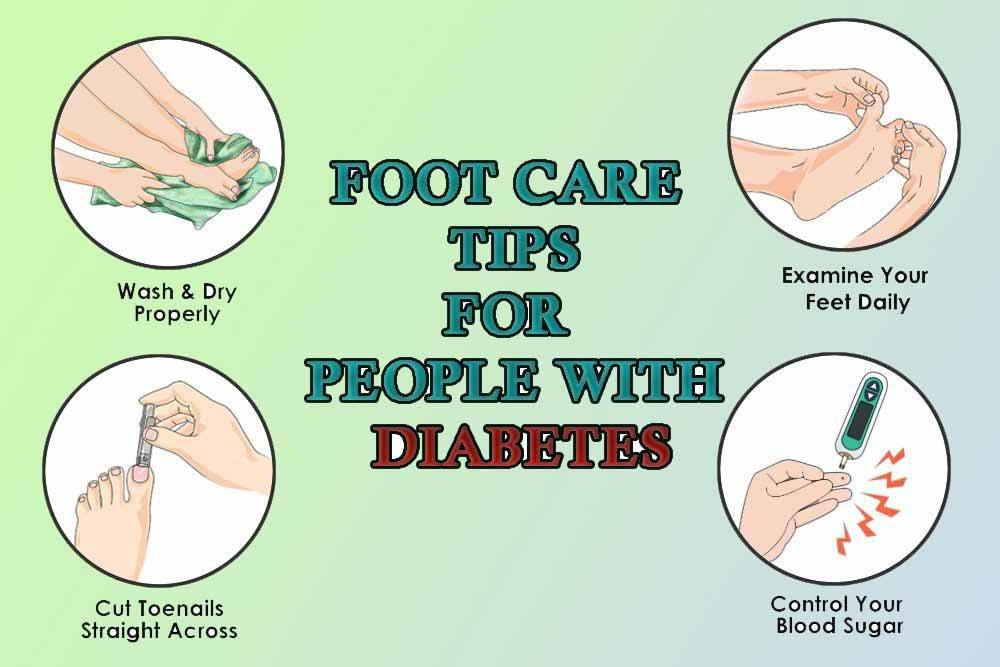People with diabetes can often hear their doctor asking about the condition of their feet. Some of them are surprised by the question, while others know how important it is to check their feet regularly and take proper foot care.
Nevertheless, it’s not only people with diabetes that should take proper care of their feet. Everyone should know how to check their feet and prevent possible foot problems.
Why You Should Take Regular Foot Care
Did you know that foot complications related to diabetes take 25% of all diabetes hospital admissions?
This happens because constant high blood sugar levels can wreak havoc on your entire body, including your legs and feet. For instance, peripheral neuropathy, or nerve damage, can lead to lower nerve sensation, and sometimes even poor circulation.
When these two conditions occur together, your feet are in danger. Not being able to feel your feet means you won’t know if you have wounds. What’s more, abnormal blood flow to the wound will slow down the healing process.
That’s why it’s highly important to check your feet regularly, and take proper care of them.
How to Check Your Feet
Examine your entire feet before putting on socks. Look carefully at every part of the foot, the heel, the sides, the sole, the top, and in between toes. If you can’t see the entire foot, use a hand mirror or ask someone to help you.
Consult your doctor if you notice anything out of the ordinary. That could be blisters, bruises, scrapes, cuts, redness, change in color, swelling, changes in the skin temperature, ingrown toenails, dry cracks, persistent foot odor, corns, and open sores.
What to Do If You Notice the Following Foot Problems
Here’s what you should do if you notice these foot issues:
- Scratches/cuts – wash them with water and mild soap, and apply antibiotic cream given by your doctor. Finally, protect the cut with a bandage.
- Dry skin – keep your skin soft by using moisturizing lotions and soaps. However, don’t apply lotion between your toes to prevent fungus.
- Blisters – never break them as that can cause an infection. Just clean it and use some antibacterial cream before securing it with a bandage.
- Itching, cracking, red skin between your toes – these are symptoms of athlete’s foot fungus. Therefore, it’s best to visit your doctor ASAP who will recommend you some cream or pill.
- Corns and calluses – use a pumice stone or emery board to smooth your corns or calluses after every shower or bath. Make sure you remove the callus in several attempts instead of all at once.
- Plantar warts – occur on the foot’s underside and look like a callus. You must consult a doctor to treat them properly.
- Ingrown toenail – to prevent ingrown toenails, trim your toenails often, cutting just across the top. Consult a doctor.
- Yellowed/discolored toenails – if your toenails become yellowish, brittle, and thick, it could mean you have a fungal nail infection. So, consult your doctor to give you the right treatment.
- Pain, swelling, warmth, or redness – signs of infection and inflammation. Visit your doctor ASAP.
- Black or blue skin color – could mean problems with your circulation. But, if your feet are cold at the same time you should visit your doctor ASAP.
Tips for Regular Foot Care
- Clean your feet by washing them regularly with warm water (never hot) and mild soap. However, you should dry them thoroughly with a towel afterward, to prevent infections that thrive in moist areas. Don’t forget to pat dry the area between your toes
- Put on your socks only after drying your feet completely
- Foot soaks are not recommended for people with diabetes
- Apply lotion to keep your skin supple. This is important as dry skin can crack, which in turn can lead to infection. However, avoid the area between your toes, and don’t forget your heels.
- Avoid walking barefoot to prevent hurting your feet
- Protect them from heat extremes
- Wear shoes and socks that fit well
- Check your feet regularly, and if you notice any of the above-listed changes, visit your doctor.


